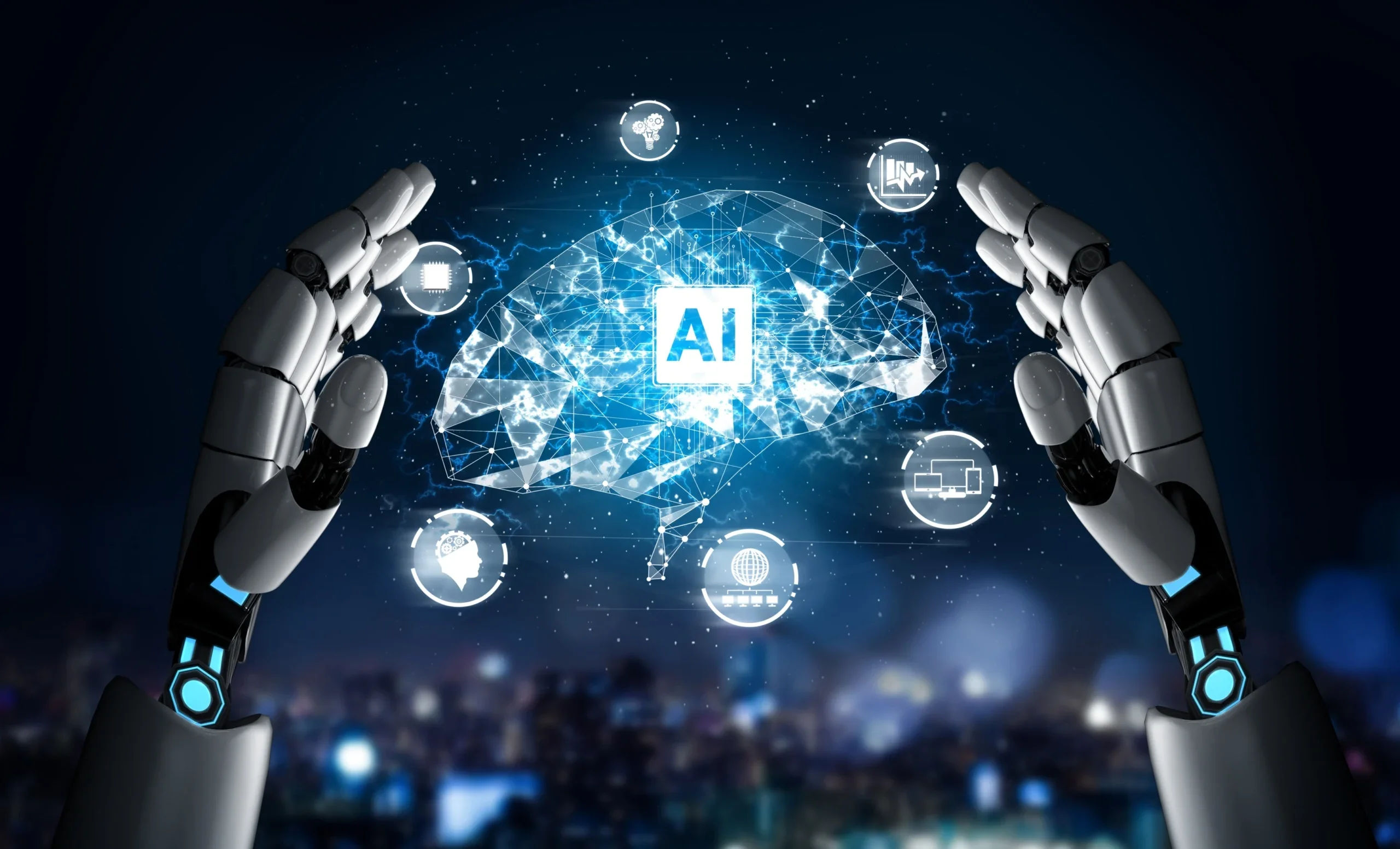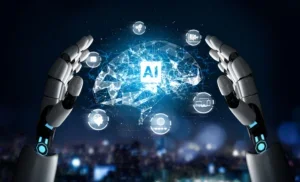The Role of Artificial Intelligence in Translation: Enhancing Efficiency and Quality
Artificial intelligence (AI) is revolutionizing industries worldwide, and translation is no exception. This article explores how AI is transforming translation services, improving both speed and accuracy while enhancing the quality of multilingual content.
1. Introduction
As global communication becomes more essential, the demand for high-quality, efficient translation services has surged. Enter artificial intelligence—a powerful tool that is changing how translation services operate. By combining machine learning, natural language processing (NLP), and neural networks, AI offers translation solutions that are faster, more accurate, and more cost-effective.
From automated machine translation (MT) to AI-assisted human translation, technology is reshaping the translation landscape. This article delves into the ways AI is enhancing translation and what this means for businesses, language professionals, and end users.
2. How AI is Transforming the Translation Industry
AI has introduced significant advancements in translation, impacting both the quality of translations and the efficiency of the process.
a. Machine Translation (MT)
AI-powered machine translation systems like Google Translate, DeepL, and Amazon Translate leverage vast data sets to provide real-time translations. Modern MT tools use neural machine translation (NMT), which applies deep learning algorithms to improve the context and fluency of translations.
While early MT models struggled with accuracy, today’s NMT systems can produce high-quality translations that handle complex sentence structures and nuanced meanings. For businesses that need to translate large volumes of content quickly, MT has become an invaluable resource.
b. Translation Memory (TM) and AI-Enhanced Consistency
Translation Memory (TM) stores previously translated phrases and sentences, allowing translators to reuse content and maintain consistency. AI enhances TM by suggesting relevant translations based on the context of the sentence, even identifying subtle differences in meaning that require slight adjustments.
AI-powered TM systems improve translation quality, especially for technical documents or branded content that requires uniform terminology across different languages.
c. Real-Time Translation
With advancements in AI, real-time translation has become a reality. From automated subtitles in video calls to instant translations in messaging apps, AI enables real-time communication across languages. Tools like Google Meet’s AI-powered captioning and Microsoft Translator allow users to communicate seamlessly, even when they don’t share a common language.
Real-time translation is especially valuable in global business settings, customer support, and international collaboration, making it easier for people to connect without language barriers.
d. Post-Editing and AI-Assisted Translation
AI doesn’t replace human translators; instead, it assists them. AI-assisted translation speeds up the process by providing machine-translated drafts, which human translators can then review and edit for accuracy and fluency. This approach combines the speed of machine translation with the quality of human expertise.
AI-assisted translation reduces turnaround times, enabling translators to handle larger volumes of work while maintaining quality. It’s particularly useful for content that requires quick publication, such as news, marketing, and social media posts.
3. Benefits of AI in Translation
AI has introduced several benefits that have improved translation processes, making it faster, more cost-effective, and scalable.
a. Improved Efficiency and Speed
AI-powered tools enable translation teams to complete projects faster, reducing turnaround times and increasing productivity. For companies handling large volumes of content, this efficiency can lead to significant cost savings.
b. Cost Reduction
By automating repetitive translation tasks, AI reduces the time and labor required for translations, lowering costs for businesses. AI-assisted translation also enables companies to focus their budgets on high-quality human editing for specialized content, rather than translating everything from scratch.
c. Consistency and Quality
AI tools ensure consistent terminology across multiple documents, which is essential for technical fields like medicine, law, and engineering. AI-powered TM and terminology management tools reduce human error and ensure that translated content adheres to industry standards.
d. Enhanced Multilingual Support for Businesses
AI has made it easier for companies to support multiple languages on their websites, apps, and customer service platforms. This enhanced multilingual capability allows businesses to cater to a global audience and improve customer satisfaction.
4. Challenges and Limitations of AI in Translation
Despite its many benefits, AI translation technology still faces several challenges.
a. Nuanced and Culturally Sensitive Content
While AI has improved in handling basic sentence structures and common phrases, it often struggles with idioms, humor, and cultural nuances. Translating creative content, such as marketing materials or literature, requires a deep understanding of context that AI can’t yet replicate.
b. Handling Rare or Specialized Languages
AI translation tools rely on large data sets to function effectively. For rare or less commonly spoken languages, these data sets may be limited, leading to lower translation quality. Additionally, specialized fields like law, medicine, and engineering often require domain-specific terminology that AI may not fully understand.
c. Quality Assurance and Human Oversight
Even advanced AI translations require human oversight to ensure accuracy. Human translators are essential for quality assurance, as they can detect subtle errors that AI might overlook. In high-stakes fields like legal and medical translation, human expertise remains crucial for accuracy and compliance.
d. Ethical and Data Privacy Concerns
AI translation often involves handling sensitive information, raising concerns around data privacy and security. When using AI tools, especially for confidential content, businesses must ensure compliance with data protection regulations like GDPR and avoid exposing sensitive information to third parties.
5. The Future of AI in Translation
AI continues to evolve, and its role in translation will likely expand as new technologies and techniques are developed.
a. AI and Human Collaboration: The Hybrid Model
The future of translation lies in a hybrid model, where AI handles repetitive tasks, and human translators focus on nuanced content. This collaboration can lead to higher-quality translations, faster turnaround times, and improved efficiency for translation agencies and businesses alike.
b. AI and Voice Translation
As voice assistants and speech recognition technology improve, voice translation will become increasingly popular. AI-driven voice translation tools are already being used in customer service and travel industries, and future advancements will enable more seamless real-time translation for spoken interactions.
c. Machine Learning and Customizable AI Models
With machine learning, companies can create custom AI models tailored to specific industries or brands. By training AI models with company-specific data, businesses can achieve more accurate and relevant translations that align with their terminology, style, and brand voice.
d. Neural Machine Translation (NMT) and Beyond
NMT has dramatically improved the quality of machine translation, but the future holds even more promise. Researchers are exploring advanced deep learning models that will enable AI to understand context better, handle idiomatic expressions, and improve accuracy in specialized fields.
6. Best Practices for Using AI in Translation
To get the most out of AI in translation, companies should follow these best practices:
a. Use AI for High-Volume, Low-Complexity Content
AI is ideal for translating content that doesn’t require a high degree of cultural adaptation, such as product descriptions, technical documents, or support articles. This allows human translators to focus on complex content that requires a personal touch.
b. Ensure Human Quality Control
Even the best AI translations need human review for accuracy and consistency. Use skilled translators to review AI-generated translations, particularly for content where precision and quality are paramount.
c. Combine AI with Translation Memory and Terminology Management
Integrating AI with translation memory and terminology management tools helps maintain consistency across documents. This approach is especially valuable for industries where specific terminology is essential.
d. Choose the Right AI Translation Tools
There are several AI translation tools available, each with unique strengths. Choose the right tool based on your content needs, language pairs, and industry requirements. Platforms like DeepL are known for high-quality translations, while Google Translate may be more accessible for basic translations.
7. Conclusion
AI has become a game-changer for the translation industry, improving efficiency, reducing costs, and enhancing the quality of multilingual content. While AI won’t replace human translators, it has become a powerful tool that, when used effectively, can create a seamless translation process.
For businesses looking to scale internationally, AI offers an efficient way to reach audiences in multiple languages without sacrificing quality. As AI continues to evolve, the possibilities for translation will expand, creating new opportunities for businesses and professionals alike.
About the Author
Michael Chen is a technology writer and translation specialist with experience in AI and machine learning applications. He writes about the intersection of technology and language, helping businesses understand how AI can enhance their translation and localization strategies.



Post Comment